Have you ever wondered why we wear belts in karate. What do those belts signify? Is there a pecking order to the different colors? Are karate ranks universally accepted?
What is the origin of the belt and rank system that many martial arts and karate school use, including our school, Full Potential Martial Arts in San Diego?
A Bit of History
In the olden days, belts were not used to signify rank in karate. The sole role of the belt was to hold one clothes together and nothing more. This was the way karate (To-de, as it was then called) was practiced in Okinawa for centuries. In those days the main objective of training was to obtain knowledge (and, perhaps, a profession, as a bodyguard for the ruling class noblemen). There were no formal ranks. Training was conducted in small groups, typically to direct decedents of the master or friends of the master.
In the early 20th century things changed. At that time karate was in the process of migrating from Okinawa into the Japanese mainland, and Karate masters of the time worked hard to make their art more palatable to the Japanese tastes. Gichin Funakoshi, founder of Shotokan Karate, discusses some of those adaptations in his book “Karate, My way of Life.” Those included adopting the term “Karate” for the art, changing terminology for techniques and kata, and others.
The belts ranking system which many martial arts use today was created in the late 19th century by Jigoro Kano, the founder of the Judo. Kano, who was trained in the battlefield art of Japanese Jujitsu adopted that art so as to make it less dangerous, and appropriate for teaching in grade schools and colleges as sport. He also combined philosophical aspects (probably influences by Confucianism) to shape the development of his discipline from a martial art (武術 bujutsu) to a martial way (武道 budo). Hence, around 1882 the art of Judo (literally, “the gentle way”) was born. While the general Japanese public in the late 19th and early 20th centuries had a negative opinion of Japanese Jujitsu (regarding it as a brutal art not appropriate for dignified kids and adults to study), Judo enjoyed popularity in Japan. This popularity was something that early Okinawan karate masters such as Funakoshi, sought to emulate as they were setting roots in the Japanese mainland.
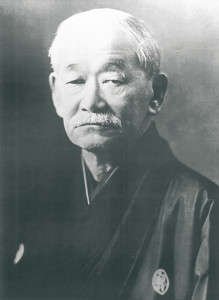
Around 1922, Gichin Funakoshi, who associated himself with Kano, adopted, for his karate practice, the Keikogi uniform that Kano developed for Judo (also called Dogi or, Gi for short). Funakoshi also adopted the Judo belt ranking system. By the way, the ranking system that Kano developed for Judo was institutionalized and blessed by the Japanese Butoku-kai (literally, martial arts association) – the section of the Japanese Ministry of Education overseeing ranks in Judo and Kendo. Funakoshi copied the Judo ranking system verbatim into karate. This early karate belt ranking system included only three belt colors:
- White Belt (three grades / kyu ranks)
- Brown Belt (three grades / kyu ranks)
- Black Belt (ten grades / dan ranks)
(Kyu ranks refers to colored belts or ranks awarded to students before black belt. Dan ranks refers to belts and ranks awarded to black belts.)
On April 12, 1924, Funakoshi awarded seven of his students the rank of 1st dan (First Degree Black Belt). (Interestingly, since ranks and belt did not exist in karate before 1922, at the time of bestowing rank upon his students, Funakoshi himself held no belt rank in karate, or in any other martial arts system.)
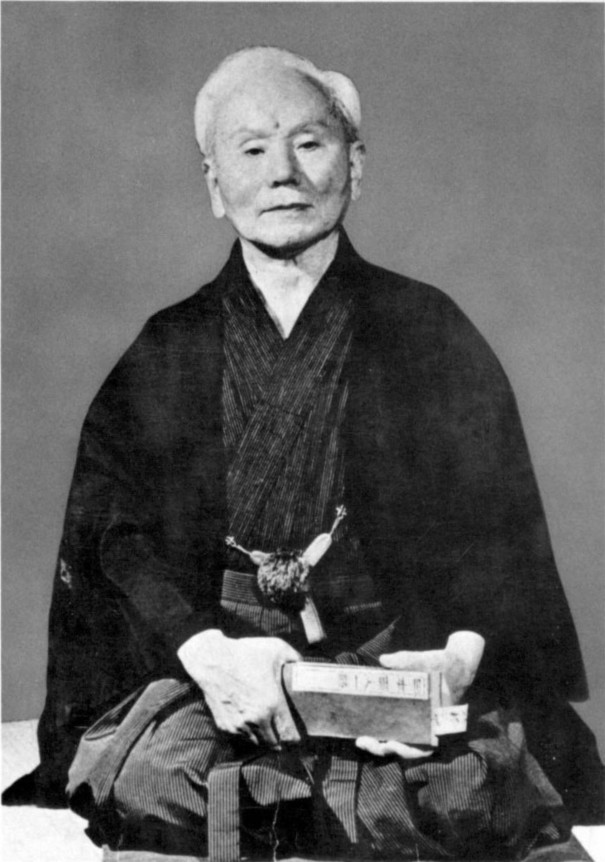
In later years, different colored belts were adopted for the kyu ranks. This is how the multi-colored belt ranking system used in many karate dojos came to be.
Belt Ranks at Full Potential Martial Arts
At Full Potential Martial arts, we use the following belt ranks. We have 10 kyu ranks (colored belt ranks) from beginner to black belt:
| White Belt | (no Kyu) |
| Orange Belt | Jukyu (10th Kyu) |
| Blue Belt | Kukyu (9th Kyu) |
| High Blue Belt | Hachikyu (8th Kyu) |
| Purple Belt | Shichikyu (7th Kyu) |
| High Purple Belt | Rokkyu (6th Kyu) |
| Green Belt | Gokyu (5th Kyu) |
| High Green Belt | Yonkyu (4th Kyu) |
| Brown Belt | Sankyu (3rd Kyu) |
| Middle Brown Belt | Nikyu (2nd Kyu) |
| High Brown Belt | Ikkyu (1st Kyu) |
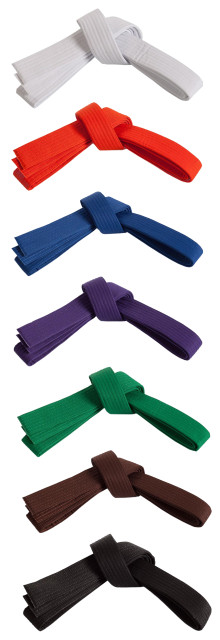
High Brown Belts students who meet the black belt standards are eligible to take a black belt test. The 1st degree black belt rank is also called Sho-dan.
At Full Potential Martial Arts we also use the rank of Shodan-Ho for probationary black belts. We award probationary black belts to black belt candidates who meet the technical requirements for a first degree black belt, and need to prove their maturity in order to be awarded a full Sho-dan. Shodan-Ho rank holders wear a black belt with a white stripe until they test and receive their full Sho-Dan.
Belt tests for 2nd Degree Black Belt (Ni-dan), 3rd Degree Black Belt (San-dan) and higher ranks are often customized to the individual student.
Standardization of Belt Ranks
You may notice that different martial arts and karate organizations use different belt systems. While the rank of white belt, brown belt and black belt have nearly universally recognized significance (with white signifying a beginner, and brown signifying the most senior colored-belt student getting close to black belt), significant variation in the color and order of other ranks exist. The variations are both in color (a common one is substituting yellow for orange) and order (in some dojos purple is senior to green). I have even seen a dojo awarding a Pink Belt and another awarding a Camouflage Belt!!
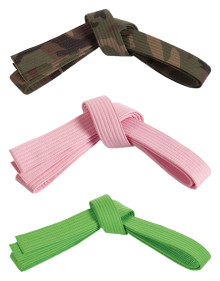
Over the years, there have been many attempts to standardize ranking standards and belt ranks among karate organizations. These started in 1938, when the Japanese Ministry of Education’s Butoku-kai contacted all then-existing karate schools in Japan for the purpose of standardizing rank requirements. The standardization efforts continued after World War II and into the 1990s with the All-Japan Karate-do Federation, the International Martial Arts Federation, the Okinawa Karate Federation, the All-Japan-Karate-do Organization, the International Traditional Karate Federation, U.S. Karate Association, Pan-American Union of Karate-do Organizations, World Union of Karate-do Organizations, and others. There are almost too many acronyms to remember!
The bottom line is that today there are no universally accepted standards for belt ranks. Furthermore, and as much as this may be shocking to learn, there are no standards for what it takes to earn a black belt. In fact, there are vast differences between different martial arts organizations in criteria for awarding a black belt. And sporting a black belt from one school does not automatically bestow upon the wearer “black belt privileges” at another school.
The Bottom Line: What Belt Ranks Mean
While karate belt ranks are a nice way to acknowledge progress along the martial arts path. Smart students always focus on their personal growth and knowledge. Those students train with intent to acquire knowledge and skill, and treat the achievement of rank is a side-effect of diligent training. As I like to say, anyone can wear a black belt. They can be had for less than $10. But wearing a black belt does nothing to bestow any knowledge upon the wearer.
Another favorite quote of mine comes from the fictional Sensei Miyagi in the 1984 movie “The Karate Kid.” When asked by Daniel-san what belt he has, Sensei Miyagi replies:
“Canvas. JC Penney, $3.98. You like?”
and
“In Okinawa, belt mean no need rope to hold up pants.”
So, focus on your training. Celebrate the attainment of rank, but don’t make rank the be-all-end-all.
As an instructor of mine once said “black belt is just the beginning…”
Enjoy the journey!!!

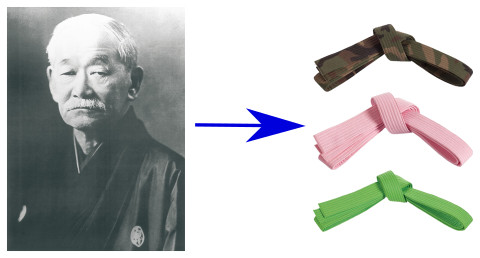
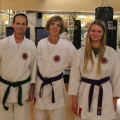
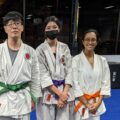
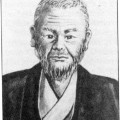
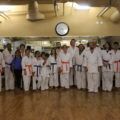
One of the best articles I’ve ever read. You’re thoughts are right on. Great job at explaining this and doing it so gracefully and so easily understood. Thank you for this very timely and important understanding that most dojo’s never talk about. On the street, it’s not what you wear or say that’s gonna save your life or the life of someone else, it’s what you know and how you can use that knowledge and skills . Belts are nice for Sport Karate and to hold your pants up. But don’t depend on it to save your life.